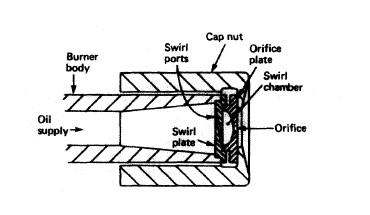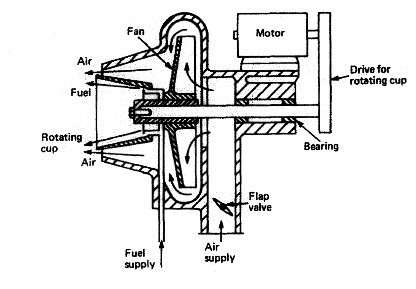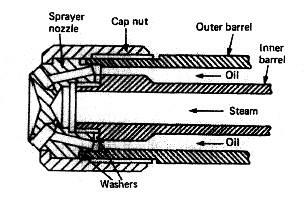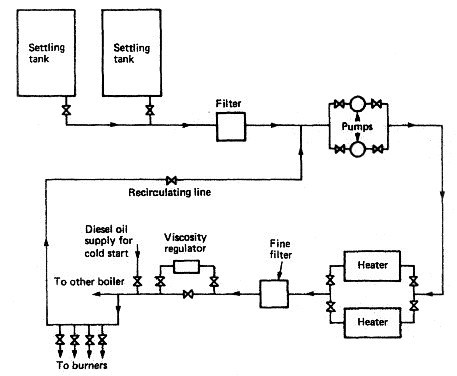Marine boilers usually burn residual low-grade fuels. This fuel is
stored in double-bottom tanks from which it is drawn by a transfer
pump up to settling tanks. Here any water in the fuel may
settle out and be drained away.
The high-pressure fuel is supplied to a burner which it leaves as an
atomised spray. The burner also rotates the fuel droplets
by the use of a swirl plate. A rotating cone of tiny oil droplets thus leaves
the burner and passes into the furnace. Various designs of burner exist,
the one just described being known as a 'pressure jet burner' .
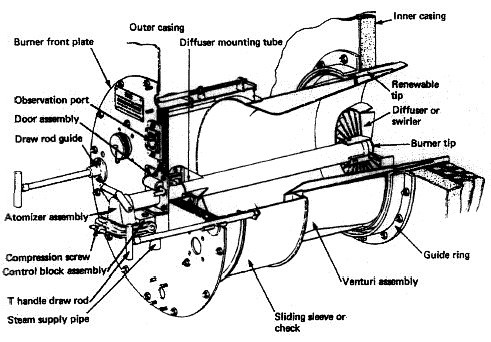
Air register for side fired boiler


